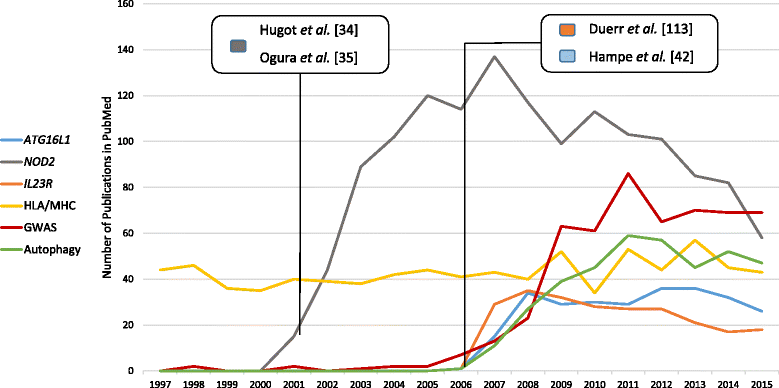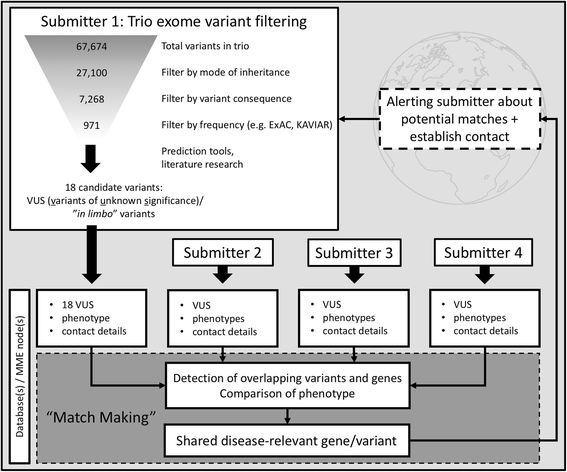Opportunities and challenges of whole-genome and -exome sequencing
- PMID: 28193154
- PMCID: PMC5307692
- DOI: 10.1186/s12863-017-0479-5
Opportunities and challenges of whole-genome and -exome sequencing
Abstract
Recent advances in the development of sequencing technologies provide researchers with unprecedented possibilities for genetic analyses. In this review, we will discuss the history of genetic studies and the progress driven by next-generation sequencing (NGS), using complex inflammatory bowel diseases as an example. We focus on the opportunities, but also challenges that researchers are facing when working with NGS data to unravel the genetic causes underlying diseases.
Keywords: Complex diseases; Inflammatory bowel diseases; NGS; Next-generation sequencing; Variant priorization; Variants of unknown significance (VUS); WES; WGS; Whole-exome sequencing; Whole-genome sequencing.
Figures



References
Publication types
MeSH terms
LinkOut - more resources
Full Text Sources
Other Literature Sources

